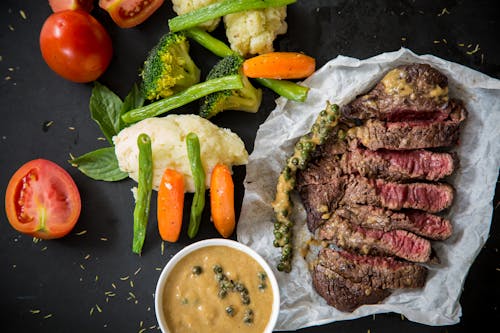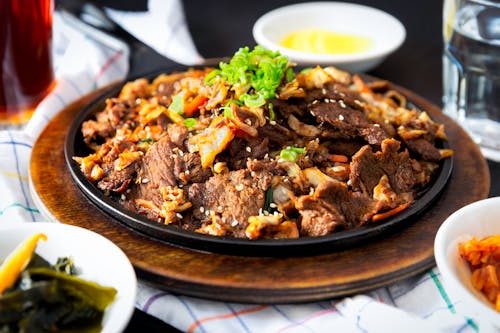
Introduction
Food is an integral part of our lives, not just for sustenance but also for pleasure, culture, and connection. The art and science of cooking involve a deep understanding of ingredients, techniques, and flavors, transforming raw materials into delightful dishes that nourish the body and soul. This article delves into the multifaceted world of food, exploring its cultural significance, the principles of cooking, and the role of ingredients. To illustrate these concepts, we will also provide a comprehensive recipe for a classic dish: Beef Bourguignon.
The Cultural Significance of Food
Food as a Cultural Identity
Food is a powerful expression of cultural identity. Each region of the world has its unique culinary traditions, shaped by history, geography, climate, and available resources. These culinary traditions are passed down through generations, preserving a sense of heritage and belonging. For example, Italian cuisine is renowned for its emphasis on fresh, high-quality ingredients and simple preparation methods, while Indian cuisine is celebrated for its complex spice blends and vibrant flavors.
Food and Social Connection
Sharing food is a fundamental way of fostering social connection and building relationships. Meals are often at the center of social gatherings, from family dinners and holiday feasts to community festivals and religious ceremonies. Food brings people together, creating opportunities for bonding, celebration, and the sharing of stories and traditions.
Food and Health
The relationship between food and health is profound. A balanced diet rich in nutrients supports overall well-being and helps prevent chronic diseases. Traditional diets, such as the Mediterranean diet, have been associated with numerous health benefits, including reduced risks of heart disease and improved longevity. Understanding the nutritional value of different foods and making informed dietary choices is crucial for maintaining a healthy lifestyle.
The Principles of Cooking
Understanding Ingredients
The foundation of any great dish lies in the quality and characteristics of its ingredients. Chefs and home cooks alike must understand the properties of various ingredients, including their flavor profiles, textures, and nutritional content. Freshness is key, as the quality of ingredients directly impacts the taste and nutritional value of the final dish.
Mastering Techniques
Cooking techniques are the tools that transform raw ingredients into delicious dishes. Techniques such as sautéing, roasting, grilling, and braising each have their own methods and applications. Mastery of these techniques allows cooks to manipulate textures and flavors, achieving the desired outcome for each dish. For example, searing meat at high temperatures creates a flavorful crust while locking in juices, while slow braising tenderizes tough cuts and develops deep, complex flavors.
Balancing Flavors
Creating a harmonious balance of flavors is an essential aspect of cooking. The five basic tastes—sweet, sour, salty, bitter, and umami—must be balanced to create a satisfying dish. Additionally, understanding how to use herbs, spices, and other flavorings enhances the complexity and depth of a dish. For instance, a touch of acidity from lemon juice or vinegar can brighten a dish and balance richness, while a hint of sweetness can counteract bitterness.
Ingredients: The Building Blocks of Culinary Art
Proteins
Proteins are a crucial component of many dishes, providing structure, texture, and flavor. Common sources of protein include meat, poultry, fish, eggs, legumes, and dairy products. Each type of protein has its own cooking requirements and flavor affinities. For example, beef benefits from slow cooking methods like braising to break down connective tissues, while fish is often best when quickly cooked to retain its delicate texture.
Vegetables and Fruits
Vegetables and fruits are essential for adding color, flavor, and nutrients to dishes. They can be prepared in a myriad of ways, from raw salads and simple sautés to elaborate gratins and purees. Seasonal produce, in particular, offers peak flavors and nutritional value. For example, summer tomatoes are at their sweetest and most flavorful, making them ideal for fresh salads and sauces.
Grains and Starches
Grains and starches provide the foundation for many meals, offering energy and substance. Common grains and starches include rice, pasta, potatoes, and bread. These ingredients are highly versatile, serving as side dishes, main components, or even desserts. The cooking methods for grains and starches vary widely, from boiling and steaming to baking and frying.
Herbs and Spices
Herbs and spices are the seasoning agents that bring dishes to life. Fresh herbs like basil, cilantro, and parsley add vibrant, aromatic notes, while dried spices such as cumin, paprika, and cinnamon contribute depth and warmth. Understanding how to blend and layer these seasonings is key to creating flavorful and aromatic dishes.
Recipe: Classic Beef Bourguignon
Introduction to Beef Bourguignon
Beef Bourguignon is a classic French dish that exemplifies the art of braising. This hearty stew features tender beef slow-cooked in red wine with aromatic vegetables and herbs. The result is a rich, flavorful dish that is perfect for a cozy dinner. Here, we provide a detailed recipe to guide you through the process of creating this culinary masterpiece.
Ingredients
- 3 pounds beef chuck, cut into 2-inch cubes
- Salt and freshly ground black pepper
- 2 tablespoons olive oil
- 4 ounces bacon, diced
- 1 large onion, chopped
- 2 carrots, peeled and sliced
- 4 cloves garlic, minced
- 2 tablespoons tomato paste
- 1/4 cup all-purpose flour
- 3 cups red wine (Burgundy or Pinot Noir)
- 2 cups beef broth
- 1 bay leaf
- 4 sprigs fresh thyme
- 2 cups pearl onions, peeled
- 1 pound mushrooms, quartered
- 2 tablespoons butter
- 2 tablespoons chopped fresh parsley, for garnish
Instructions
- Prepare the Beef
- Season the beef cubes generously with salt and pepper.
- In a large Dutch oven or heavy-bottomed pot, heat the olive oil over medium-high heat.
- Working in batches, sear the beef cubes until browned on all sides. Remove the beef and set aside.
- Cook the Bacon and Vegetables
- In the same pot, add the diced bacon and cook until crispy. Remove the bacon and set aside, leaving the rendered fat in the pot.
- Add the chopped onion and carrots to the pot and sauté until the vegetables are softened, about 5-7 minutes.
- Stir in the minced garlic and tomato paste, cooking for another minute until fragrant.
- Deglaze and Build the Stew
- Sprinkle the flour over the vegetables, stirring to coat evenly.
- Gradually add the red wine, scraping up any browned bits from the bottom of the pot. This process, known as deglazing, adds depth of flavor to the stew.
- Return the seared beef and bacon to the pot. Add the beef broth, bay leaf, and thyme sprigs.
- Bring the mixture to a boil, then reduce the heat to low. Cover and simmer for 2-3 hours, or until the beef is tender.
- Prepare the Pearl Onions and Mushrooms
- In a separate skillet, melt the butter over medium heat.
- Add the pearl onions and mushrooms, sautéing until they are golden brown and tender. This step adds additional layers of flavor to the stew.
- Combine and Finish
- Add the sautéed onions and mushrooms to the stew during the last 30 minutes of cooking.
- Remove the bay leaf and thyme sprigs before serving.
- Serve and Garnish
- Ladle the Beef Bourguignon into bowls, garnishing with chopped fresh parsley.
- Serve with crusty bread, mashed potatoes, or buttered noodles.
The Science Behind the Recipe
Maillard Reaction
The Maillard reaction is a chemical reaction between amino acids and reducing sugars that gives browned food its distinctive flavor. This reaction occurs when the beef is seared at high temperatures, creating a complex flavor profile that enhances the overall dish.
Braising Technique
Braising is a slow-cooking method that involves cooking food in a small amount of liquid at low temperatures. This technique is ideal for tough cuts of meat, as it breaks down connective tissues, resulting in tender, flavorful dishes. The combination of red wine and beef broth in this recipe not only adds moisture but also infuses the meat with rich flavors.
Flavor Development
Flavor development in Beef Bourguignon is achieved through layering ingredients and cooking techniques. The initial searing of the beef, the caramelization of the vegetables, the deglazing process, and the slow simmering all contribute to a deeply flavorful stew. The addition of sautéed onions and mushrooms towards the end ensures a balance of textures and flavors.

Conclusion
The art and science of cooking are beautifully illustrated in the preparation of Beef Bourguignon. This classic dish exemplifies the importance of understanding ingredients, mastering techniques, and balancing flavors. Beyond the recipe itself, food is a powerful expression of culture, identity, and connection. By exploring the principles of cooking and the cultural significance of food, we gain a deeper appreciation for the culinary arts and the joy of sharing a delicious meal. Whether you’re a seasoned chef or a home cook, the journey of creating and enjoying food is a rewarding and enriching experience.














